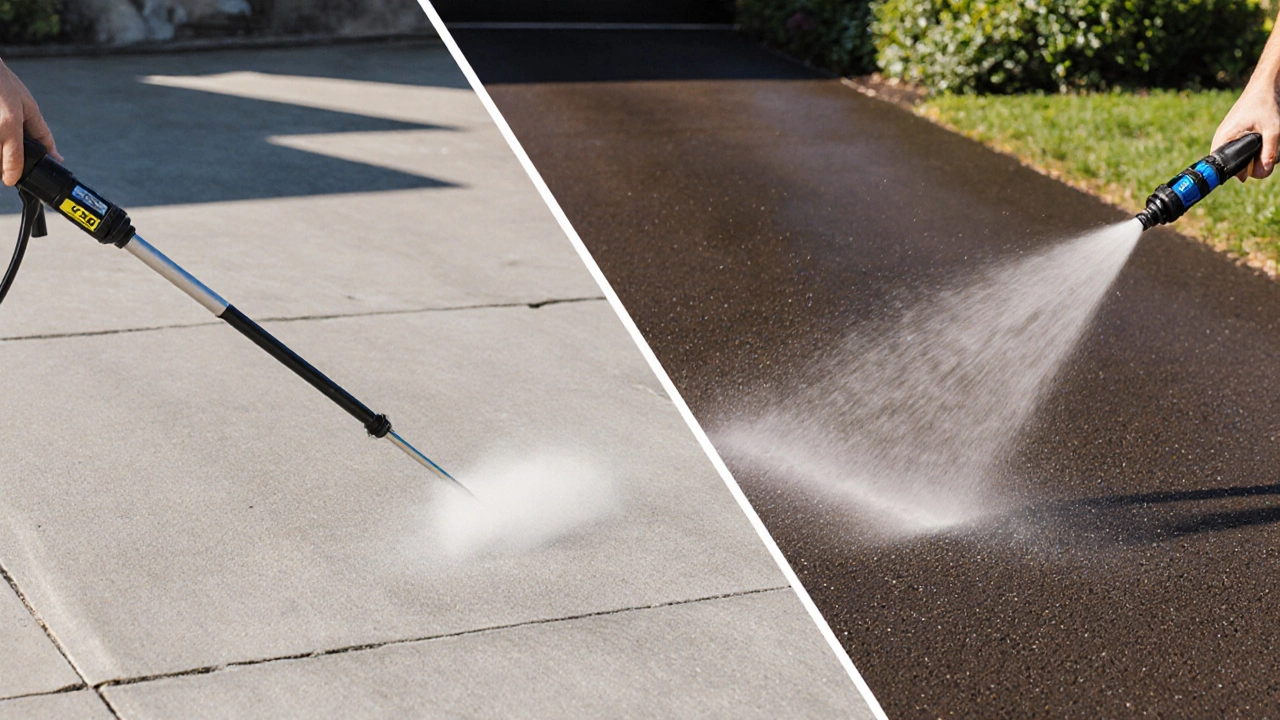Surface Prep: Essential Guides & Tips
When talking about surface prep, the set of steps you take to make a surface safe, clean and ready for the next treatment. Also known as pre‑cleaning, it covers everything from clearing debris to protecting nearby plants. Good surface prep saves time, prevents damage and makes any cleaning method work better. Below you’ll see how this core idea links to pressure washing, window cleaning and green cleaning approaches.
Why Pressure Washing Starts with Prep
Pressure washing, a high‑pressure water technique used to strip grime from walls, decks and driveways can’t be done safely without a solid prep routine. First, you need to inspect the surface for cracks, loose paint or delicate features; fixing these prevents water intrusion. Next, cover plants, outdoor furniture and electrical outlets with tarps – a simple safety gear step that avoids costly accidents. The right nozzle and detergent are chosen based on material type, which means knowing the surface composition is a must. When you follow the checklist – safety gear, surface check, area clearing, equipment setup and weather check – the pressure washer works efficiently and you avoid water waste.
Another common prep task is dealing with cleaning agents. If you’re using a vinegar‑based solution, you must know which surfaces it can harm. Vinegar cleaning, using diluted white vinegar as an eco‑friendly degreaser is great on glass and tile, but it can etch stone or damage sealed wood. By matching the right cleaner to the right material, surface prep becomes a decision‑making process that protects finishes while still delivering a sparkle.
When you move to glass and frames, Window cleaning, the practice of removing dirt, water spots and film from interior or exterior windows also demands prep. Start by removing loose dust with a soft brush, then lay down a drop cloth to catch runoff. Choose a microfiber cloth or a squeegee with a clean rubber blade; a dirty blade just spreads grime. For tough film, a short soak with an eco‑friendly solution does the trick – but only after you’ve shielded surrounding plants and sealed any nearby gaps. This prep step eliminates streaks and cuts down on the number of passes needed.
Finally, the growing trend toward eco‑friendly cleaning, using biodegradable products and water‑saving methods for a greener approach ties directly into surface prep. Knowing the water source of a pressure washer, using reclaimed water or low‑flow nozzles, and selecting non‑toxic detergents all start with an assessment of the work area. When you plan for water conservation up front, you reduce runoff, protect nearby gardens and stay compliant with UK regulations. In short, surface prep isn’t just a checklist – it’s the bridge between safety, effectiveness and sustainability.
All these ideas feed into the articles below. Whether you need a step‑by‑step pressure‑wash prep guide, a safe window‑cleaning routine, or tips on avoiding vinegar damage, the collection covers every angle of surface prep. Dive into the posts to get actionable checklists, tool recommendations and real‑world advice you can apply today.

Driveway Pressure Washing: How Much PSI Do You Need?
Find out the exact PSI needed for concrete and asphalt driveways, learn how to pick the right pressure washer, adjust settings for tough stains, and avoid surface damage.
Read More